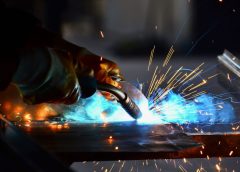When it comes to welding, the tricks of the trade present themselves through experience and time. However, for those who aim to get a head start on their progress, it’s worth taking in as much information as possible to hone your skills faster. These basic tips to consider when preparing to weld are simple but important in preparing you for the job.
Clean Your Work Surface
Whether you like to get started with a practice weld or right on the work surface, cleaning the area you are welding on is important. Things like dirt and rust get in the way of a good weld and reduce your ability to put out quality work. By cleaning your surface area carefully, you eliminate the likelihood of having to redo your work if the final weld is not secure enough or up to standard.
Ensure the Area Is Ready for a Proper Weld
Aside from cleaning the surface, the size of the metal you work with is worth noting. Knowing about beveling and weld prep goes a long way in making your job easier, with lower chances of messing up your weld. Beveling is done to the edges of the metal to ensure they are thin enough at the point of contact for the weld to fill up as much space as possible. This allows the metals to bond more securely as a result.
Use Both Hands
Welding is a precise trade that requires focus and control. It’s important not to try welding with one hand if it can be helped. The steadier your grip on the machine, the easier it is to create a clean connection with few or no flaws. It’s also worth noting that using your legs to turn rather than your arms keeps you steady and makes your weld more accurate.
While most of these simple suggestions are integral to your typical setup process, the more things you can do correctly before getting the job started, the easier it is to do it on the first try. These basic tips to consider when preparing to weld are worth implementing to help increase your quality and reduce work time.





